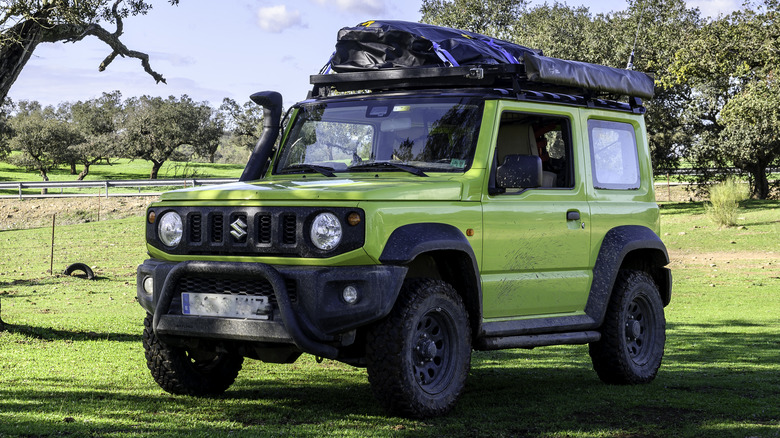Ever since Suzuki broke out the news of discontinuing its compact off-roader Jimny, there has been tons of speculation and several questions about the automaker’s decision to do so. Alongside this, they also announced the discontinuation of Ignis, Swace Estate, and Swift Sport from its European lineup. The decision was taken in the interest of Suzuki’s larger plan of eventually ending the production of all its petrol and hybrid (mild and full) models in the EU. Post 2025, the Across, Swift, S-Cross, and Vitara will be the only vehicles in Suzuki’s hybrid range as the company transitions towards a greener future.
Advertisement
Another major reason behind taking the step was also to comply with the latest automobile emission regulations in the EU. Per the latest guidelines, beginning in 2025, the maximum permissible emissions for cars should not exceed 93.6g CO2/km — and for vans, it should not exceed 153.9g CO2/km. Despite being a small 3-door SUV, the Suzuki Jimny ranks high in carbon emissions. It has recorded figures of up to 170g CO2/km, depending on the driving conditions and the transmission type, which are way above the current limit of 95.0g CO2/km.
Besides, the low sales figures of the Suzuki Jimny in the last few years could also be a contributing factor as to why the automobile giant decided to put the current model to rest. Whether or not a Jimny EV will see the light of day is still uncertain, but even if it does, it will likely be a few years away.
Advertisement
A quick glance at the Suzuki Jimny’s 50-year-long run
Suzuki unveiled the Jimny for the very first time in 1970 with the nametag LJ10. It had a design that was suitable for extreme conditions, and was also a head-turner. As Suzuki’s first 4WD vehicle, the Jimny packed a 0.36-liter two-cylinder, two-stroke engine that churned out a humble 24.6 horsepower. In the years that followed, the SUV underwent a couple of changes, like the introduction of more powerful water-cooled engines in the LJ20 and LJ80, and the different rooftop options.
Advertisement
The second-gen Jimny (SJ410), launched in ’81, was a much more well-rounded car in comparison. While displaying impressive off-roading capabilities, it offered a smooth experience as an everyday vehicle, too. With a revamped chassis and comfort-oriented interiors, it also had a larger inline-four 0.97-liter powertrain with 50 horsepower. Its successor SJ413 from the year 1986 came with a 5-speed manual transmission and an even bigger 1.3-liter engine.
The third generation of Jimny drifted a tad away from the boxier designs of the previous generations, featuring rounded edges, and a softer look overall. When revealed in 1998, the JB23 had a ladder frame chassis, stronger suspensions, and a 1.3-liter four-cylinder engine which was later upgraded to a 1.5-liter turbodiesel Renault engine. The successive iterations of the Jimny’s third generation received several minor upgrades that added but little to the original variant.
Advertisement
The fourth and final generation of the Jimny had been on the cards for quite some time before it was finally revealed in 2018. It had the most aggressive and bold design of any Jimny till then. However, it still boasted a minimal all-black design on the inside, and had a ton of utility-based tech. Under the hood, it packed a fuel-efficient 1.5-liter four-cylinder engine capable of dishing out 100 horsepower. Suzuki even equipped it with the company’s signature Allgrip Pro AWD system catapulting its off-roading abilities even further. Moreover, the latest Jimny shipped with a whole new array of safety features like High Beam Assist, Traffic Sign Recognition, DSBS, and Weaving Alert.





